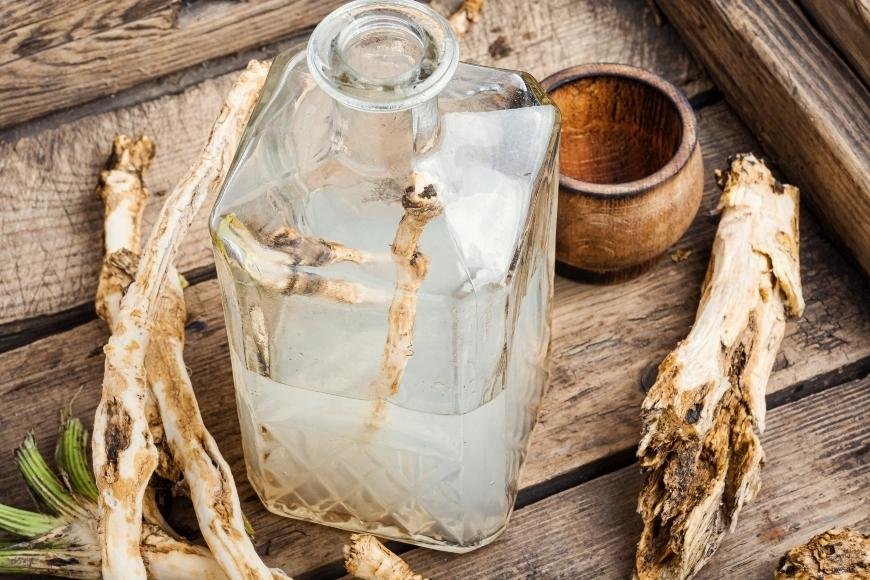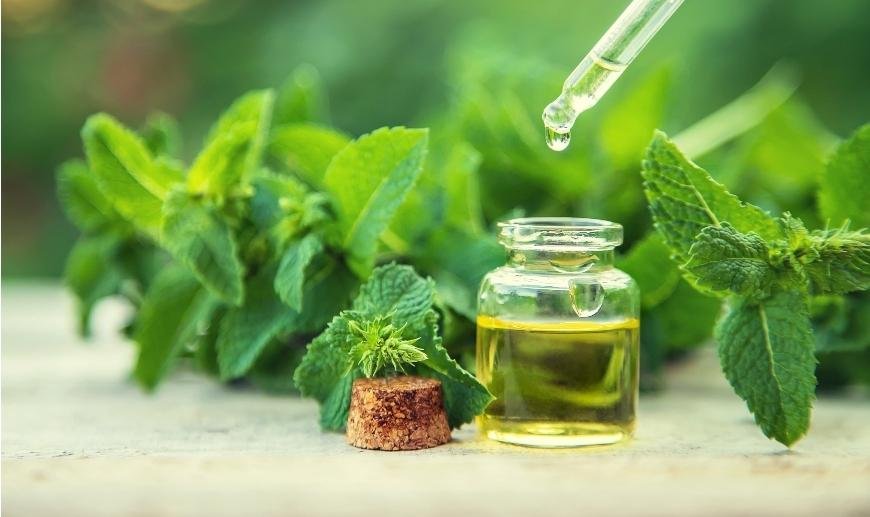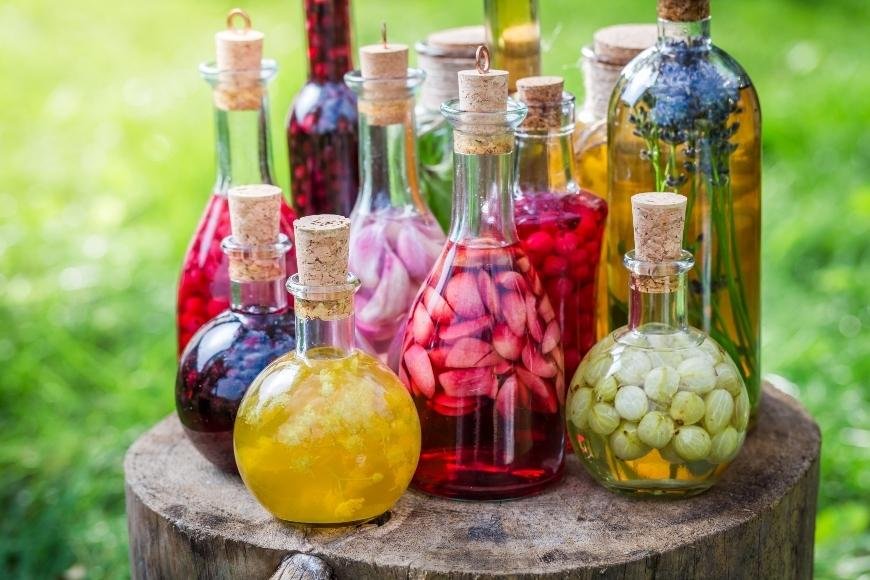How to Make a Damiana Extract
Learn how to make a Damiana Extract with our easy DIY tutorial, perfect for young adults exploring herbal remedies and consuming Turnera diffusa.

Learning how to make a Damiana extract can open up new possibilities for those interested in exploring the world of herbal remedies. Turnera diffusa, generally referred to as Damiana, is a flora native to Central and South America that has been customarily employed for its aphrodisiacal qualities and delicate energizer impacts.
In this blog post, we will discuss the advantages of making a Damiana extract compared to consuming it in other forms, as well as explore various types of extraction methods and provide instructions on how to make your own. Additionally, we'll provide a comprehensive list of materials needed and guide you through a step-by-step process on how to make your very own Damiana extract.
Furthermore, proper storage techniques will be discussed to ensure your extract maintains its potency over time. Lastly, we'll touch upon important safety precautions one must consider when taking Damiana or any other herbal remedies. By the end of this post, you should have all the knowledge necessary for successfully making and using a high-quality Damiana extract.
Table of Contents:
- Types of Extractions
- Why Make an Extract?
- What You Need to Make an Extract
- Step-by-Step Process for Making an Extract
- Storing Your Extract
- Safety precautions
- FAQs in Relation to How to Make a Damiana Extract
- Conclusion
Types of Extractions
When it comes to extracting the active compounds of Damiana, there are several methods available. Depending on what you’re looking for and your own preferences, one method may be more suitable than another. Here we will discuss some of the most popular ways to extract from this powerful herb.
The first type of extraction is a tincture. This involves soaking Damiana in alcohol or glycerin for up to two weeks in order to draw out its medicinal properties into a liquid form that can be taken orally or applied topically. Tinctures are sought after for their power and quick-acting impacts, making them perfect for those who require prompt alleviation from their indications.
Another option is chocolate syrup extraction which utilizes cocoa butter as a base with added sugar and other ingredients such as vanilla extract or cinnamon oil depending on desired flavorings. Chocolate syrup has been used by many people over time as an alternative way to consume Damiana without having to smoke it or make tea out of it; however, this method does not offer any additional therapeutic benefits compared to smoking or drinking tea made from the plant itself.
Turnera diffusa extractions involve grinding up the leaves before steeping them in hot water so that all the beneficial compounds are extracted into a concentrated solution which can then be consumed either directly or added into recipes such as smoothies, teas etc This process allows users to experience all of Damiana’s health benefits while avoiding potential risks associated with smoking the plant material itself like respiratory irritation and increased risk of cancer due to combustion byproducts present in smoke inhalation.
Types of Extractions can range from simple to complex, depending on the desired outcome. Realizing the purpose behind an extraction will aid in selecting the most appropriate technique for a given situation.
Why Make an Extract?

Making an extract from Damiana is a great way to consume this herbal remedy. Extracts are usually created by infusing herbs in a solvent such as alcohol, vinegar, oil, or glycerin and then reducing the mixture until it forms a concentrated syrup.
One of the main benefits of making an extract from Damiana is that it increases its potency and effects when consumed. This makes extracts ideal for those who want to experience greater therapeutic benefits from taking Damiana than they would get from simply consuming raw leaves or flowers alone. Extracts also make it easier to dose accurately since you can measure out specific amounts rather than relying on eyeballing how much leaf material you’re using each time.
Another benefit of making an extract with Damiana is that it allows you to create your own unique recipes and flavors. For instance, after filtering out any residual plant material, you could concoct a chocolate syrup by blending cocoa powder and sweetener (e.g., honey) with the prepared Damiana extract. You could even infuse oils like coconut oil with Turnera diffusa for topical application.
Making an extract of damiana is a great way to maximize the benefits of this powerful herb, and it can be done with minimal effort. With all the necessary ingredients in hand, you are now ready to learn how to make your own damiana extract.
What You Need to Make an Extract
To make your own, you’ll need some basic materials and tools:
First, you'll need the herb itself. You can acquire it in large amounts from various online sources or health food stores. Once you have the herb, start by crushing it into small pieces so that more of its active ingredients are exposed to liquid when making your extract.
For the extraction process, you can choose either alcohol or glycerin depending on your desired outcome. Vodka is an ideal choice for its neutral flavor and proof content of at least 40%, making it powerful enough to draw out all the beneficial compounds from Damiana without being too potent. Glycerin may alter the taste of your final product if consumed directly; however, it has added benefits such as safety for children and pets which makes it a popular selection among parents seeking natural remedies for their households.
The other items for making an extract are: a mason jar with lid, cheesecloth or muslin bag, strainer/sieve and container for storing your finished product.
To make an extract, you will need the right ingredients and equipment. Now, let's take a closer look at the procedure for crafting a damiana extract.
Step-by-Step Process for Making an Extract

Creating a distillate from Damiana necessitates perseverance and the correct materials. Before starting, make sure to have all the essential components and materials needed.
Once you have gathered everything together start by placing 1 cup of dried Damiana into the mason jar. Fill the jar up with enough high-proof alcohol so that all of the plant material is submerged in liquid. Seal tightly and shake vigorously for 2 minutes to ensure that everything is mixed well together. Let this mixture sit at room temperature away from direct sunlight for 7 days shaking occasionally throughout each day.
After 7 days strain out any solids using a cheesecloth lined sieve over another bowl or container discarding anything left behind in the sieve once done pouring through it. Place your now strained liquid back into its original Mason Jar adding more fresh alcohol if needed until completely filled again seal tightly and shake one last time before letting sit overnight at room temperature to allow any remaining sediment to settle at bottom of the jar. Carefully pour off clear liquid above settling sediment leaving about ¼ inch on top avoiding disturbing settled particles below then discard this layer along with sediment still contained within it.
Safety must be a priority when handling any amount of extract, regardless of size. Especially when dealing with higher proof liquors like those mentioned here, due to their flammable nature, caution should be exercised around open flames etc.
Once the steps for creating an extract have been completed, it is essential to store it appropriately in order to maintain its potency and shelf life. Now that your extract is ready, it's essential to keep it in the correct manner so as to ensure its potency and shelf life.
Storing Your Extract
When storing your Damiana extract, it is important to follow a few simple guidelines. To ensure its longevity, store your extract in an airtight container away from direct sunlight or heat sources and make sure the lid is securely closed. Ensure that the lid of the storage container is firmly shut so no dampness can penetrate. Additionally, you may want to consider adding some desiccant packs or silica gel packets into the container as well for extra protection against moisture.
It is essential to ensure extracts are not left out for extended durations, as this could lead to deterioration from oxidation and exposure. If you are going on vacation or will be away from home for more than a couple days, it’s recommended that you store your extracts somewhere safe such as in a locked box or cabinet with limited access.
If possible, try not to freeze-dry your extract either since this process can cause damage and reduce potency levels significantly over time. Instead, opt for chocolate syrup which has been proven effective at preserving many herbal remedies like Damiana without sacrificing their potency levels too much over extended periods of storage when stored correctly using the above-mentioned methods (airtight containers with lids tightly sealed).
Finally, keep all extracts out of reach from children and pets at all times. Taking Turnera diffusa responsibly means making sure it is kept safely stored away where only those who understand how powerful its effects can be have access - especially if they plan on consuming it regularly.
It is important to store your extract properly in order to ensure its quality and potency. With that being said, it is also essential to take safety precautions when making or using the extract.
Safety precautions
When it comes to creating and using extracts, safety should always be the number one priority. Extracts, condensed herbal remedies, can be utilized for a range of objectives from enhancing digestion to supplying mental acuity. While these extracts can provide many benefits, they must also be consumed responsibly and with caution in order to avoid any potential risks or side effects.
Prior to consuming any extract, it is crucial to confer with a physician as certain extracts may be incompatible with medicines or lead to other health issues. Before consuming any extract, ensure that it is free from ingredients or plants to which you may have allergies or sensitivities. It’s also important to read labels carefully so that you know exactly what is in the product and how much of each ingredient it contains.
Another key safety precaution when making an extract is ensuring that all equipment used is clean and sterile prior to use in order to reduce the risk of contamination by bacteria or fungi which could lead to illness if ingested. You should also wear protective clothing such as gloves when handling herbs as some contain irritants which can cause skin irritation upon contact. When extracting solvents such as alcohols like vodka or brandy for tinctures, make sure there are no open flames nearby due their flammable nature; never smoke near a solvent extraction process.
When consuming an extract orally (such as turnera diffusa), start slowly by taking small doses until you understand how your body reacts - overconsumption could lead to adverse reactions such as nausea, dizziness or headaches depending on what type was taken (e.g., chocolate syrup). If any negative symptoms occur after consumption stop immediately and seek medical attention right away if necessary; never take more than recommended dosage amount even if feeling no effects whatsoever. Keep track of your progress while experimenting with different types/strengths/forms so that you know what works best for your individual needs - this will help ensure safe usage over time while avoiding possible complications down the road due improper dosages being taken unknowingly.
FAQs in Relation to How to Make a Damiana Extract
How is damiana made?
Damiana is a bush indigenous to Central and South America that has been employed for centuries as an herbal medicine. The leaves of the shrub are dried, pounded into a powder, and then brewed in hot water or blended with alcohol to make either tea or tincture. Damiana can also be smoked for its mild psychoactive effects. Due to its calming effects, Damiana has been used for centuries as a sexual stimulant and mood booster.
What is damiana extract?
Damiana extract is a herbal supplement made from the leaves of Turnera diffusa, an evergreen shrub native to Central and South America. For centuries, this shrub's leaves have been used as a sexual stimulant, invigorating tonic and calming agent. Flavonoids, the active compounds in damiana, have been observed to possess properties that include anti-inflammatory effects, antioxidant activity, antispasmodic attributes and antidepressant features. Damiana also contains essential oils that may act on the brain's serotonin receptors which could lead to improved moods and relaxation effects. It is commonly taken in tincture, tea or capsule form.
Conclusion
Making an extract from damiana can be a great way to get the most out of this plant. By understanding the different types of extraction methods, why you would make an extract, what you need to do it and how to store your extract properly, you will be able to confidently create extracts that are safe and effective for use. Remember always take safety precautions when making any kind of extract and never ingest anything without consulting with a professional first. With these tips in mind, we hope that now you have all the information necessary to successfully make a damiana extract.






































































































































